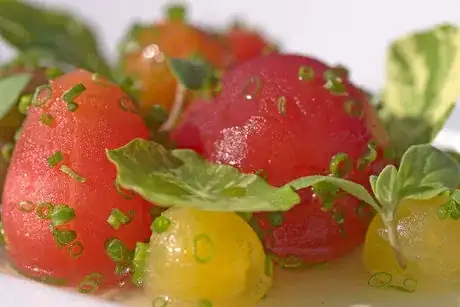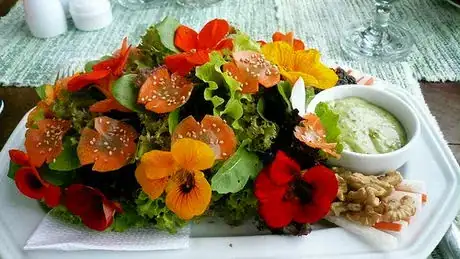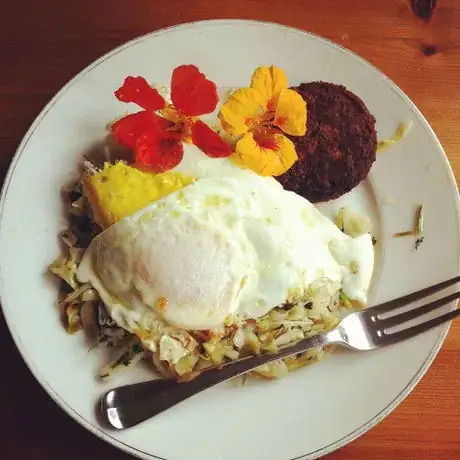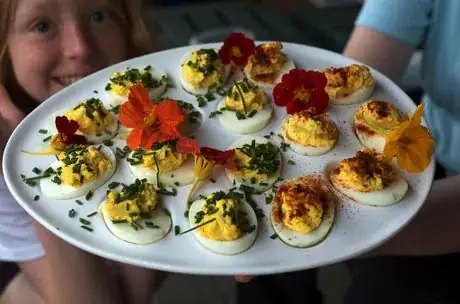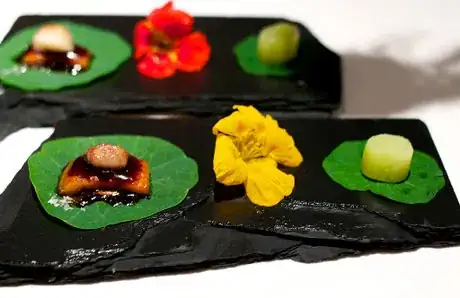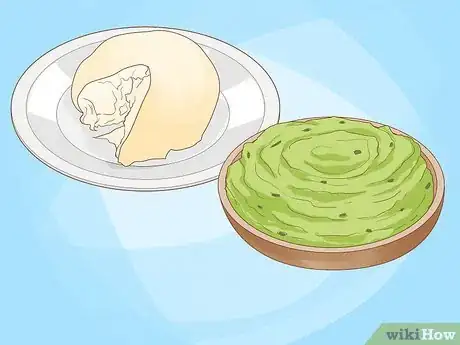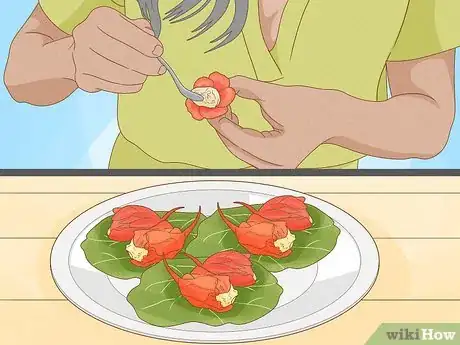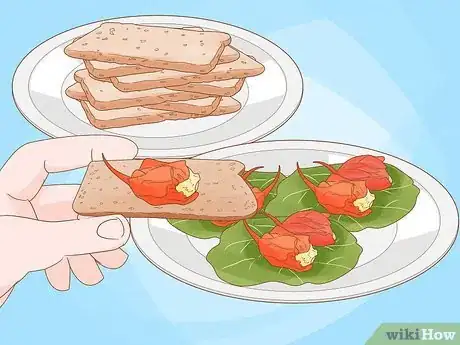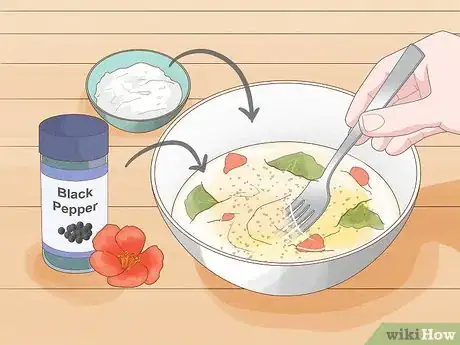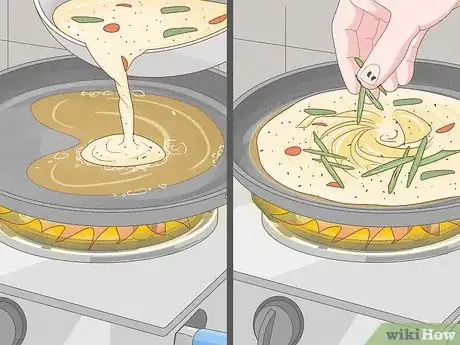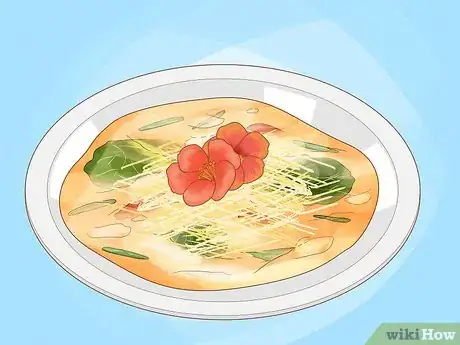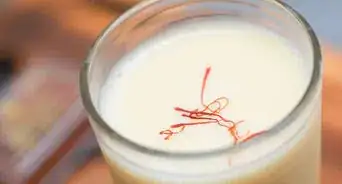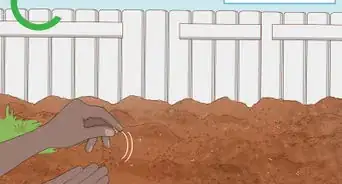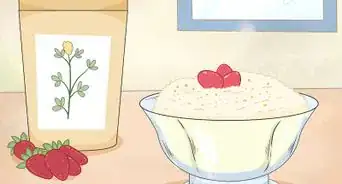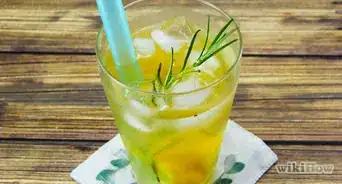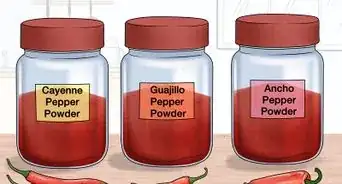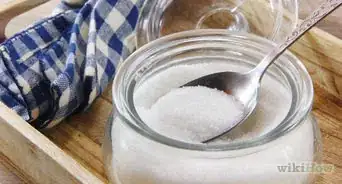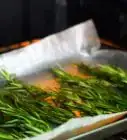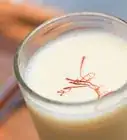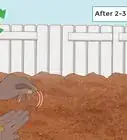This article was co-authored by wikiHow staff writer, Christopher M. Osborne, PhD. Christopher Osborne has been a wikiHow Content Creator since 2015. He is also a historian who holds a PhD from The University of Notre Dame and has taught at universities in and around Pittsburgh, PA. His scholarly publications and presentations focus on his research interests in early American history, but Chris also enjoys the challenges and rewards of writing wikiHow articles on a wide range of subjects.
There are 10 references cited in this article, which can be found at the bottom of the page.
wikiHow marks an article as reader-approved once it receives enough positive feedback. In this case, 100% of readers who voted found the article helpful, earning it our reader-approved status.
This article has been viewed 158,551 times.
Learn more...
The nasturtium (Tropaeolum majus) is a hardy annual that grows by climbing and sprawling. It produces beautiful flowers that can be put to great culinary use, and the leaves are also edible.
Ingredients
For All Methods Below
- Unsprayed/untreated nasturtium flowers and/or leaves and/or seeds
Serves 1
- 50g/2 oz tender runner beans
- 2 eggs
- 30ml/2 tablespoons milk
- 2 nasturtium seeds
- 2 young nasturtium leaves
- 4 nasturtiums, petals only
- Freshly ground salt and black pepper, to taste
- 15ml/1 tablespoon butter
- Parmesan cheese, grated, to taste
Steps
Adding to salads
Making nasturtium condiments
Stuffed nasturtiums
These little delicacies are perfect for afternoon tea finger nibbles.
-
1Select large, whole flowers in good condition. While not essential, it's more effective to choose a variety of colors for variation.
-
2Choose a suitable stuffing. Any soft cheese, dip or guacamole will make an ideal stuffing.[8]
-
3Put teaspoonfuls of stuffing inside the flower until about three quarters full. Gently fold the petals back around the stuffing, the stickiness of which should hold the petals in place.
-
4Serve with Melba toast or crackers. The stuffed flower goes on top of the toast or cracker for ease of eating and completes the texture perfectly.
- Alternatives to toast or crackers include slices of cucumber, sticks of celery or slivers of capsicum/bell peppers.
- The stuffed flower can be eaten alone if desired.
Making a nasturtium omelette
-
1Cut the runner beans into thin slices. Add to a saucepan of boiling water and boil for 4 minutes. Drain and set aside.
-
2Crack the eggs into a mixing bowl. Pour in the milk and beat together.
-
3Using the back of a fork, crush the nasturtium seeds. Add them to the egg mixture. Also toss in the leaves and petals.
-
4Season to taste with salt and pepper.
-
5Add the butter to the frying pan. Melt over gentle heat.
-
6Pour in the egg and nasturtium mixture. Add the boiled beans and stir quickly. Then allow to cook gently until the omelette sets.
-
7Serve. Sprinkle grated Parmesan cheese over the omelette and serve. Garnish with nasturtium petals.
Community Q&A
-
QuestionWhat is the nutritional value of nasturtiums?
 Community AnswerNasturtiums contain Vitamin C and iron, as well as antibiotic properties in the leaves.
Community AnswerNasturtiums contain Vitamin C and iron, as well as antibiotic properties in the leaves. -
QuestionIs it true that nasturtiums are good relaxers and anti-stress remedies?
 Community AnswerHerb remedies are said to relax people, although this has never been scientifically proven. However, you should try it if you need a natural relaxer. It might work for you.
Community AnswerHerb remedies are said to relax people, although this has never been scientifically proven. However, you should try it if you need a natural relaxer. It might work for you. -
QuestionCan I use nasturtium leaves to make dolmades?
 Community AnswerAs far as I know, that has never been done before. However, nasturtiums do go well with stuffed meat and vegetable dishes, so by all means, try it!
Community AnswerAs far as I know, that has never been done before. However, nasturtiums do go well with stuffed meat and vegetable dishes, so by all means, try it!
Warnings
- Do not eat nasturtiums that have been sprayed or treated with pesticides. Do not pick nasturtiums from the roadside or take them from anywhere that you cannot be sure how safe they are.⧼thumbs_response⧽
Things You'll Need
- Nasturtium plant
- Ingredients
- Blender
- Frying pan
- Mixing implements
References
- ↑ https://www.motherearthnews.com/real-food/nasturtium-zmaz82mjzglo
- ↑ Rosalind Creasy, The Edible Flower Garden, p. 51, (1999), ISBN 962-593-293-3
- ↑ https://garden.org/learn/articles/view/4112/
- ↑ https://www.bite.co.nz/recipe/12356/Nasturtium-salad-with-balsamic-dressing/
- ↑ http://www.simplebites.net/nasturtium-and-tomato-salad-with-herbs/
- ↑ https://www.gardenbetty.com/poor-mans-capers-pickled-nasturtium-pods/
- ↑ https://www.splendidtable.org/recipes/nasturtium-capers
- ↑ https://www.food.com/recipe/stuffed-nasturtium-flowers-126169
- Nasturtium omelette adapted from Kathy Brown, The Edible Flower Garden, p. 106, (2001), ISBN 1-85967-879-3
- Rosalind Creasy, The Edible Flower Garden, pp. 50-51, (1999), ISBN 962-593-293-3 – research source

